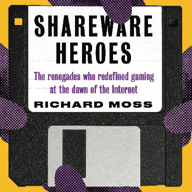@MossRC I'm curious about a few comments you made about 3D in *Secret History.*
You called the Pathways engine "illusory 3D" and vertical look in Marathon as "an optical illusion."
Do these games not count as "real" 3D? I follow that they may not be defined by maps with points with 3 coordinates. But if they create 2D images that look like a representation of 3D space, that seems to fit the definition of 3D to me.
@MossRC I don't ask to nitpick, just curious to hear what's behind this concept. I've heard other people (not you) say "Doom/Marathon are not really 3D", and wondering how true that is.
Maybe there is a documentary I need to watch 😄
@CodingItWrong @MossRC I have a feeling this might answer your question. Hope it helps :) https://en.wikipedia.org/wiki/2.5D
@CodingItWrong @MossRC It's a surprisingly complex discussion, and there seem to be several iterations of what constitutes 2.5D.
@CodingItWrong That wiki page covers most of the detail, but to offer a more pithy explanation: it's all semantics, as all 3D games are ultimately rendered as a 2D image, but when people say "real" or "true" 3D they usually mean polygonal 3D, where the maps and all objects are stored and manipulated as 3D coordinates -- including the player, enemies, and camera.
Doom looks 3D thanks to its use of billboarding (for sprites) plus ray casting and binary space partitioning (for walls and floors), but you could render it as a top-down maze and it's mechanically the same game. Marathon uses shearing (sliding and scaling on the y axis) to create an optical illusion that you're looking up and down but is also using tricks to present 2D geometry and logic as though it's 3D.
- replies
- 1
- announces
- 1
- likes
- 2
